Jim Gain’s Reflection’s of the Natural World offers a record of his experiences in nature, documented by beautiful photographs and exciting narratives. He is one of our best local naturalists and photographers. The following is adapted from his latest post; the original has a bit more detail.
The Discovery

It was 6:30 am and I found myself, once again, in a restricted area at the southern part of the San Joaquin River National Wildlife Refuge, west of Modesto. The previous morning I had started a run of point counts as a part of the Least Bell’s Vireo monitoring program with the US Fish & Wildlife Service. In 2006, Least Bell’s Vireos had been found to be breeding on the refuge after more than fifty years without records of breeding in the Central Valley. Since then, there has been a yearly effort to monitor and document their presence on the refuge.
I had made a mistake and missed a point count location the day before, so I had returned to pick up at the last correct spot. I had inadvertently left my map at home, so I was waiting for my wife to send me a digital copy. While I waited, I was standing outside my car, swatting away mosquitos and enjoying the sounds of the birds singing all around me.
There were lots of Marsh Wrens calling with their vociferous gurgling, rattling trill. Red-winged Blackbirds were singing their odd conk-la-lee call. Amongst the continuous chorus of these marsh birds was the occasional witchety-witchety-witchety call of the Common Yellowthroat and the odd, discordant squawk of the Common Gallinule. Then the bass section kicked in when the American Bittern began its deep booming pump-er-lunk, pump-er-lunk call. The combined orchestra was quite cathartic on this beautiful morning and I felt far from worries in the calming presence of nature.
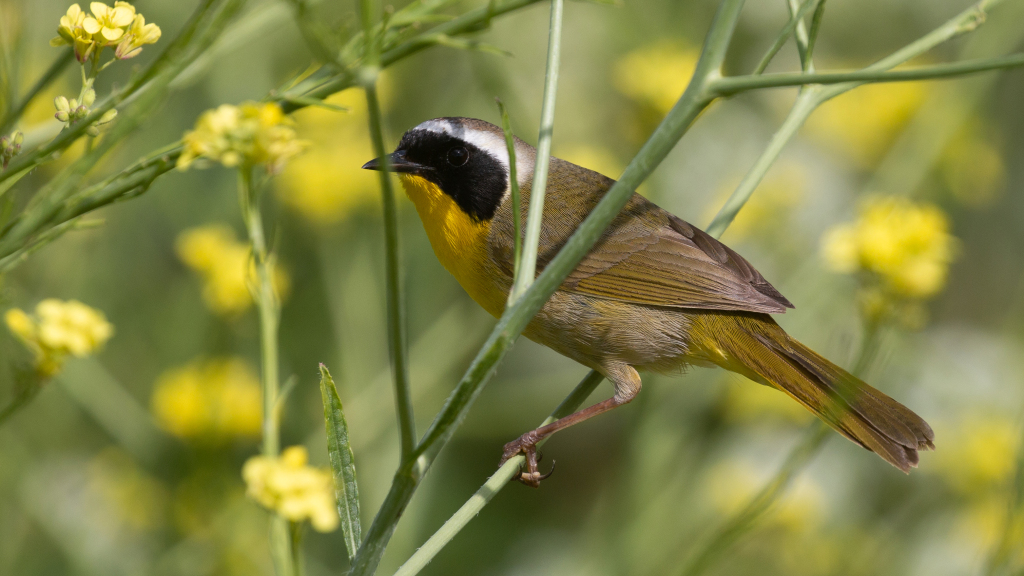
I had glanced one more time at my phone to see if the map had arrived when I heard it — a somewhat muted cof-cof-cof-cof-cof drifted across the marsh from several hundred yards away. My consciousness immediately questioned the veracity of what my ears were trying to communicate. Cupping my hands behind my ears like a big antenna, I strained all my senses for a second offering of that call. And then it repeated, more clearly this time, or perhaps because of the heightened state of my auditory receptors: cof-cof-cof-cof-cof and again, cof-cof-cof-cof-cof.
The adrenaline surged through me as I realized that not one, but two males were calling from different locations. I crept carefully and quietly along the road, trying to get closer to my prey. And then I saw them! One flew up from the tules and then a second one chased after it quite closely, not 60 feet from where I stood: two LEAST BITTERNS. Somehow, while looking for one “Least” species, I had found another!
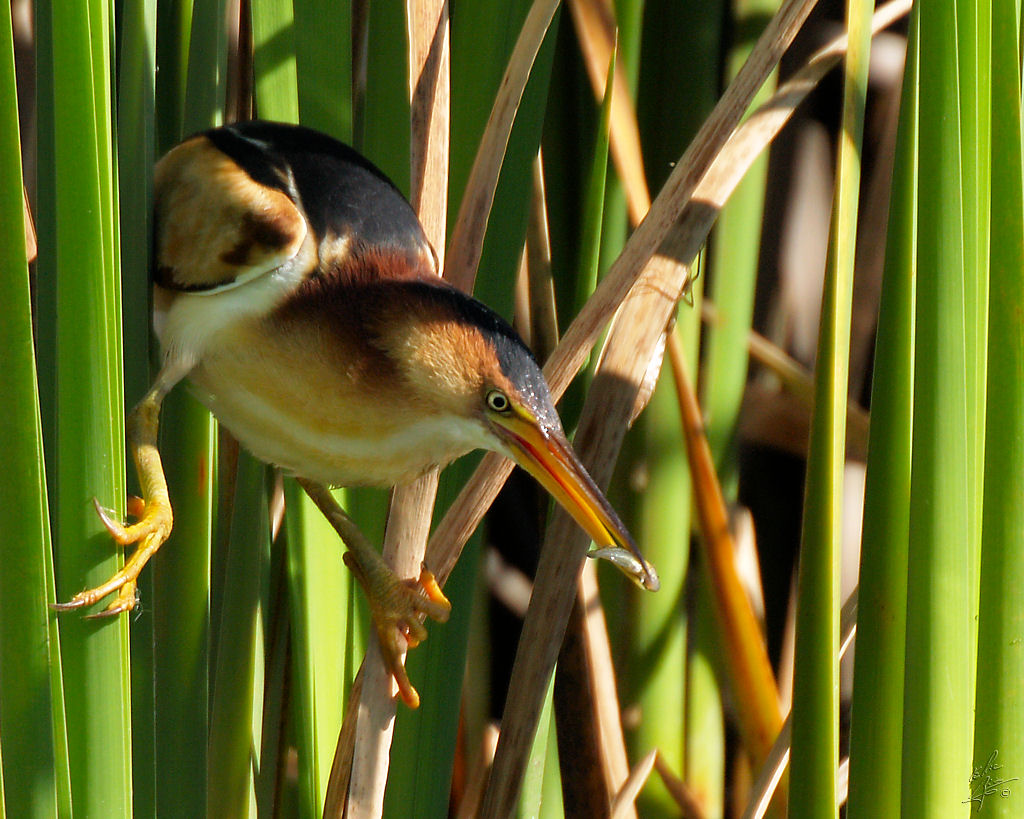
The excitement I felt came from knowing that the sighting of a Least Bittern anywhere in northern California has been extremely rare for decades. Birders eager to add the species to their checklists often had to venture to southern California, where the birds could be found at the Salton Sea and along the Colorado River.
Least Bitterns are a California Species of Special Concern whose numbers have declined severely in the Central Valley since 1945. They qualify as a Species of Special Concern due to their population declines and range retractions. There are only a handful of Least Bittern sightings in Stanislaus County, and a pair at this protected location at this time of the breeding season, screamed of potential nesting.
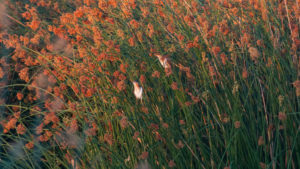
The refuge manager, Eric Hopson was as excited as I was about the discovery, and immediately visited the location where he recorded video with the two males calling softly in the distance. He related that the 2 males continued to sing continuously for most of that day. My follow-up visits the next morning revealed that at least 3 Least Bitterns were currently exploring the rich habitat of the refuge but singing only sporadically. One week later the only sound coming from them was the kek-kek-kek call given while on a nest. Ironically, I was searching for the Least Bell’s Vireo, another threatened species, when I found the bitterns.
Taxonomic Connections
Least Bitterns belong to the Ardeidae family that also includes herons, egrets and other bitterns. There are 68 bird species included in this family with 8 species found locally. They range from the giant Great Blue Heron, to the elegant Great Egret.
The Least Bittern is not the only bittern species that occurs in the valley. The much larger American Bittern is much more likely to be observed in our nearby wetlands. The American Bittern however, is much larger than the diminutive Least. While their habitat is similar, their niches are quite distinct. While the larger American Bittern wades methodically along the shallow water and grassy edges, the Least Bittern discretely picks it way from tule to tule, grasping the reeds with its claws like a Marsh Wren as it squeezes its narrow body through the dense vegetation.
The Least Bittern’s scientific name is Ixobrychus exilis. Ixobrychus is from Ancient Greek ixias, a reed-like plant and brukhomai, to bellow. Exilis meaning little, slender.
Description
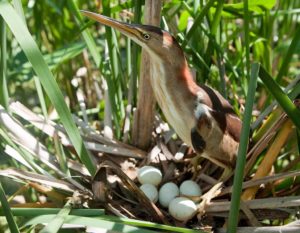
With 16 species of Bitterns worldwide, the Least Bittern is one of the smallest herons in the world. They’re stylishly attired in hues of chestnut, cream, and black, with the male more ornately colored than the female. Its narrow body allows it to slip through dense, tangled vegetation with the ease of the aptly named rails that occupy the same habitat. Because of its habitat choice, it often goes unseen except when it flies, but its cooing and clucking call notes are heard frequently at dawn and dusk and sometimes at night. Like other bitterns, they eat fish, frogs, and similar aquatic life.
Distribution and Habitat
Least Bitterns migrate from their wintering grounds in Northern Mexico and Baja California in mid-April, with nesting starting in mid-May and fledglings appearing in early June. Until very recently, Least Bitterns had become extremely rare in the San Joaquin Valley, primarily due to loss of their wetland habitat. Remnant populations have bred in the Sacramento Valley over many years, but recent breeding records for the San Joaquin Valley are extremely scarce. The San Joaquin County bird checklist shows the species as extirpated there. Least Bitterns live in fresh-water areas with tall, dense vegetation such as tules and cattails. Their niche of choice is along the edge of the vegetation over deep water because they mostly climb in reeds rather than wading. Restoration of habitat such as has taken place on the San Joaquin River National Wildlife Refuge is thought to be a major factor in their return to the Valley.
The Gem of the San Joaquin River — Refuge Extraordinaire
The vision of the San Joaquin River National Wildlife Refuge is quite clearly stated in the Draft Comprehensive Conservation Plan.
“This Refuge will conserve and restore the area’s native habitats, maintaining its role as an important riparian corridor for natural resources within the state’s Central Valley. It will emphasize management of native wildlife and the necessary actions that focus on the recovery of Federal and State listed endangered/threatened species and other species of special concern, and protection and/or enhancement of migratory bird resources.”
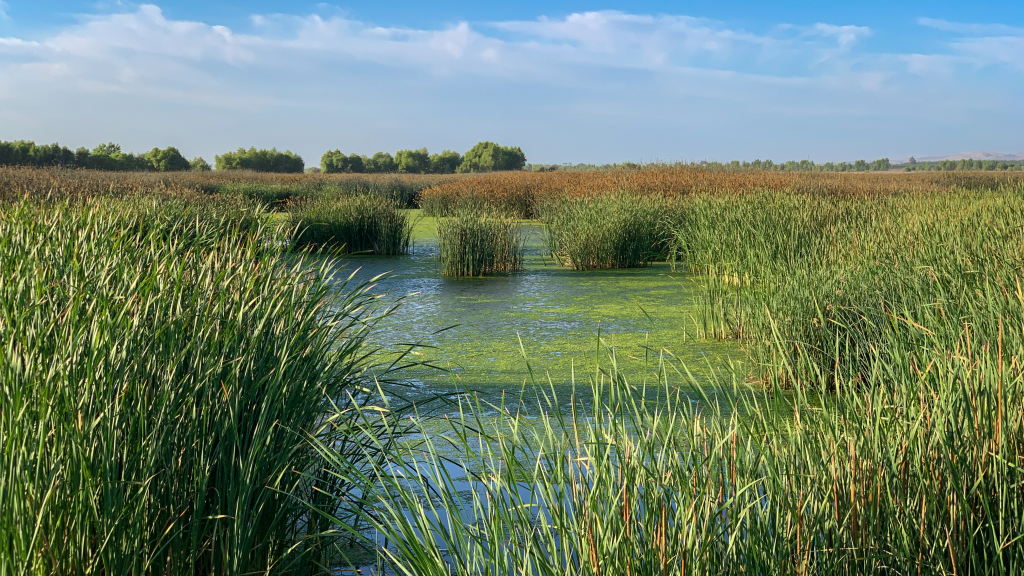
It was no accident that the Least Bitterns happened to choose this area to raise their young. Eric Hopson and his staff have worked closely with scientists and consultants to recreate the deep water permanent marsh habitat that once extended along the length of the San Joaquin Valley. Least Bitterns can only live in fresh-water areas with tall, dense vegetation such as tules and cattails. Their niche of choice is along the edge of the vegetation over deep water because they mostly climb in reeds rather than wading.
And Now, the Rest of the Story
Thus far, with barely a week’s worth of observations, it’s exciting to see how this will play out. Based on the lack of mating calls and the observance of several on nest kek calls, it is possible they are incubating eggs. Stay tuned for a follow-up report at the end of the breeding cycle in mid-July. It’s the “Least” I can do.
